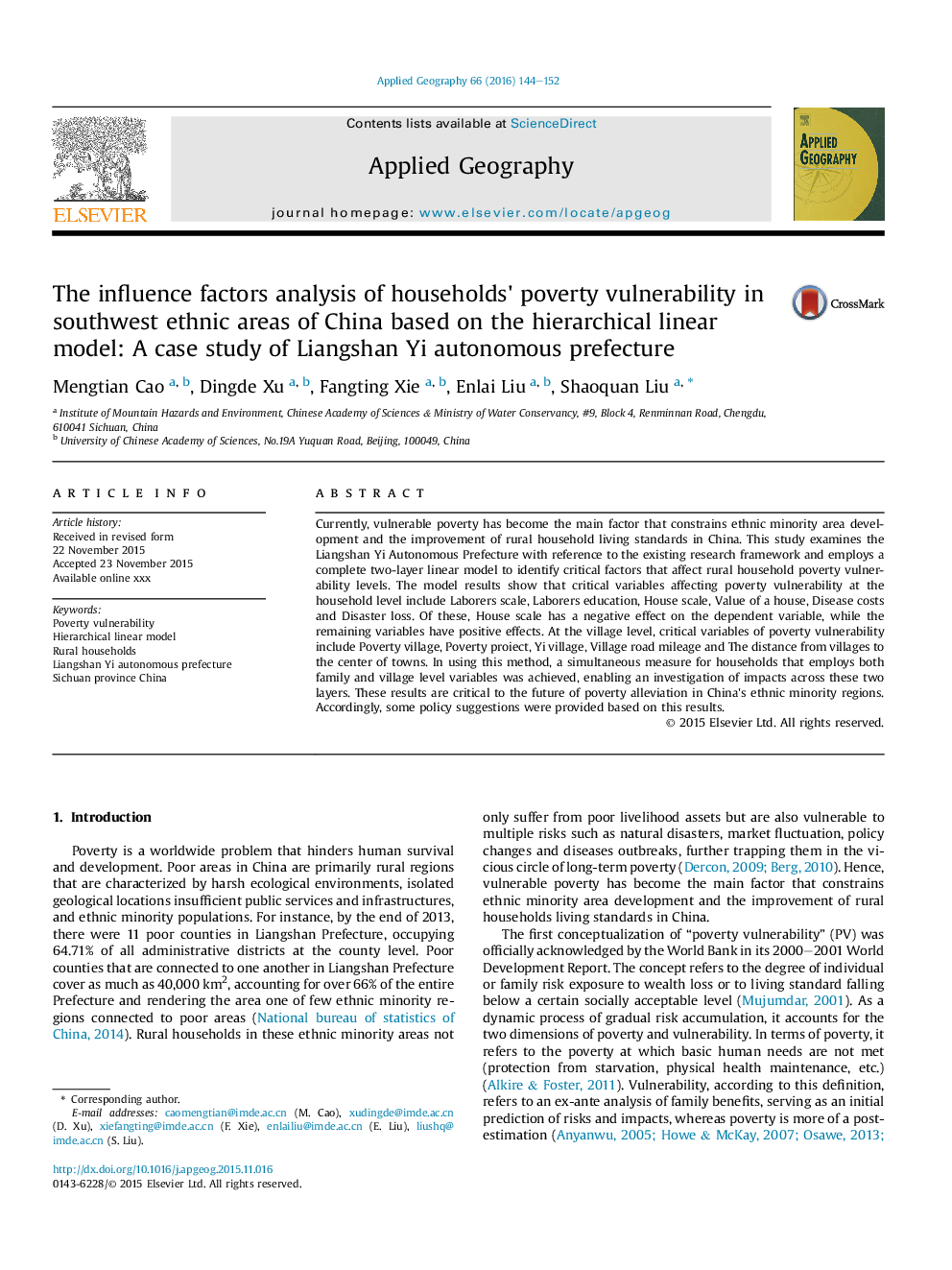| Article ID | Journal | Published Year | Pages | File Type |
|---|---|---|---|---|
| 6538426 | Applied Geography | 2016 | 9 Pages |
Abstract
Currently, vulnerable poverty has become the main factor that constrains ethnic minority area development and the improvement of rural household living standards in China. This study examines the Liangshan Yi Autonomous Prefecture with reference to the existing research framework and employs a complete two-layer linear model to identify critical factors that affect rural household poverty vulnerability levels. The model results show that critical variables affecting poverty vulnerability at the household level include Laborers scale, Laborers education, House scale, Value of a house, Disease costs and Disaster loss. Of these, House scale has a negative effect on the dependent variable, while the remaining variables have positive effects. At the village level, critical variables of poverty vulnerability include Poverty village, Poverty proiect, Yi village, Village road mileage and The distance from villages to the center of towns. In using this method, a simultaneous measure for households that employs both family and village level variables was achieved, enabling an investigation of impacts across these two layers. These results are critical to the future of poverty alleviation in China's ethnic minority regions. Accordingly, some policy suggestions were provided based on this results.
Related Topics
Life Sciences
Agricultural and Biological Sciences
Forestry
Authors
Mengtian Cao, Dingde Xu, Fangting Xie, Enlai Liu, Shaoquan Liu,
